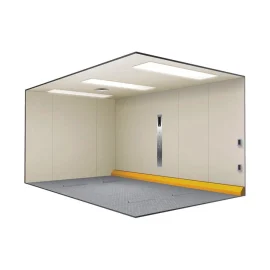Description
Stretcher elevator cabins are special elevator cabins designed to transport patients and provide patient care services. These cabins are generally used in hospitals, healthcare institutions and similar facilities.
- Design and Engineering: Stretcher elevator cabins must be designed to meet specific needs. During this design process, the engineering team must work to ensure that the cabin is safe, durable, and meets patient handling standards. In addition, attention should be paid to ergonomic factors to increase the comfort and safety of patients and healthcare personnel.
- Material Selection: It is important that the materials used in the construction of the cabin are of high quality, hygienic and durable. Stainless steel, aluminum and special coatings are generally the materials of choice.
- Safety Standards: Stretcher elevator cabins must comply with national and international safety standards. These standards include features such as automatic stopping of the cabin in case of emergency, safe door systems, and emergency call buttons.
- Hygiene and Cleanliness: Considering its use in the healthcare sector, stretcher elevator cabins must be hygienic. It should have surfaces that can be easily cleaned and disinfected.
- Integration Capabilities: Stretcher elevator cabins must be able to be integrated with hospital automation systems and other facility systems. This can make patient transport processes more efficient and strengthen intra-facility communication.
- Energy Efficiency: The energy efficiency of the cabinets produced is important. This is important to reduce operating costs and reduce environmental impact.
- Ease of Assembly and Maintenance: Cabinets should be easy to assemble and maintain. This saves plant operators and maintenance teams time and costs.
Manufacturers of stretcher lift cabins can offer custom designs and features to meet customer demands. This enables us to offer solutions tailored to the needs of each facility.


